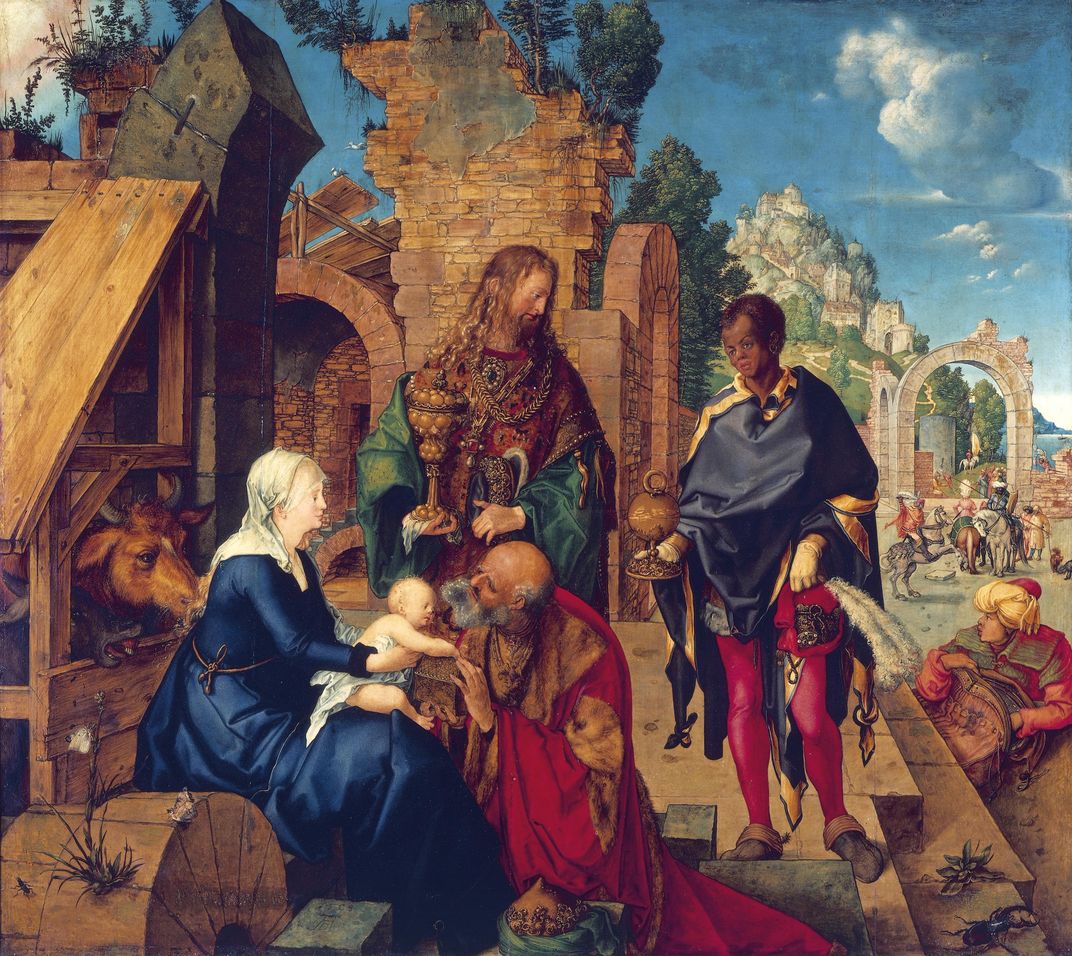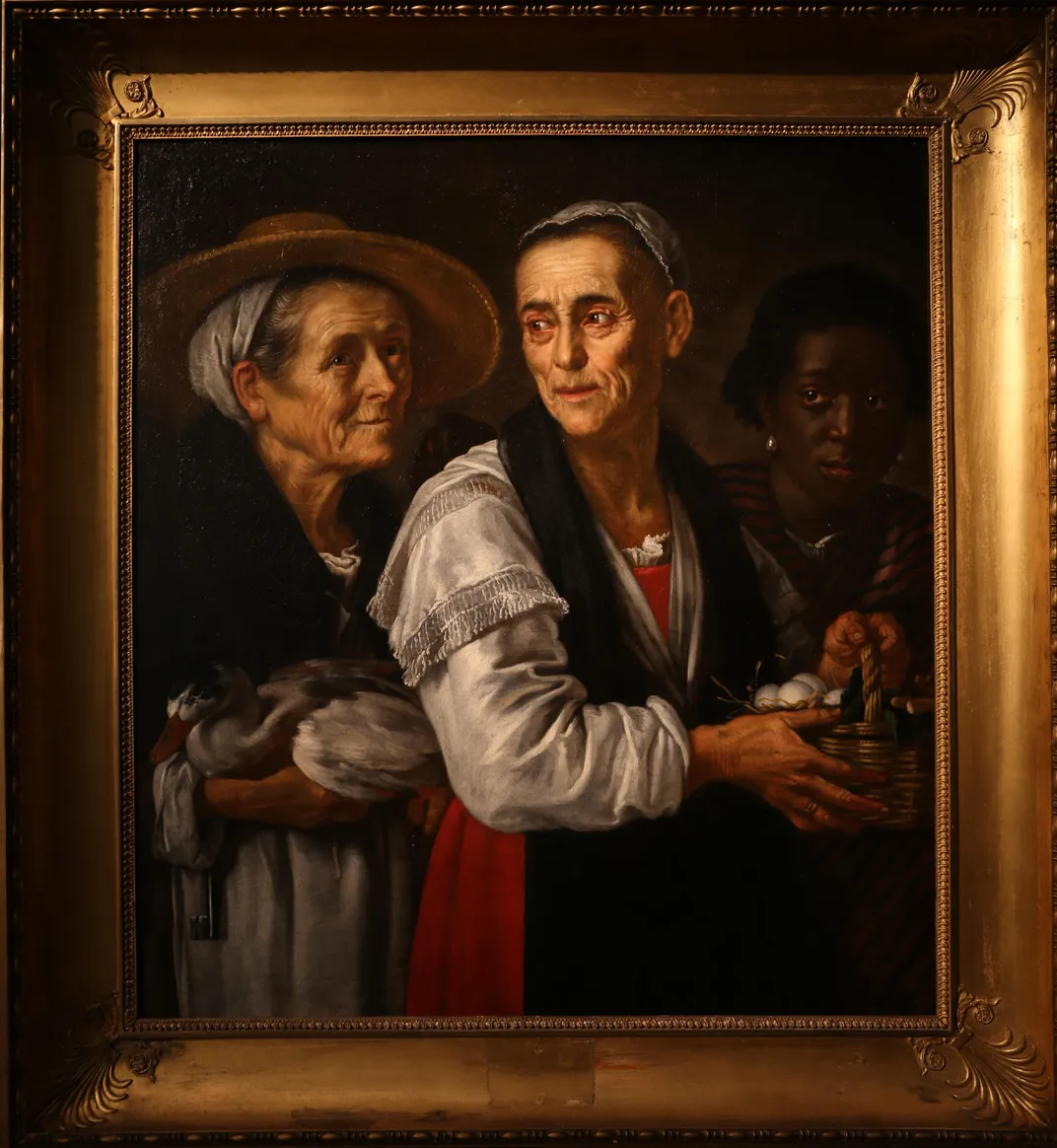How the Uffizi Gallery Is Highlighting Black Figures in Renaissance Art
Each Saturday, the Florentine museum will release a new educational video on TikTok and Facebook
:focal(316x156:317x157)/https://tf-cmsv2-smithsonianmag-media.s3.amazonaws.com/filer/6c/d7/6cd7c75f-8861-4443-9dac-24a0289cafe1/black_musician.png)
Many of the images widely associated with the Italian Renaissance—think Leonardo da Vinci’s Mona Lisa, Sandro Botticelli’s The Birth of Venus and Michelangelo’s The Creation of Adam—are dominated by white figures. But as Emily Roe and Angelo Amante report for Reuters, black people played a pivotal role in this era of artistic innovation—and now, a new initiative from Florence’s Uffizi Gallery seeks to highlight these individuals’ contributions.
Each Saturday for the next seven weeks, the Italian art museum will release a new video exploring representations of overlooked African figures, both real and imagined, in its Renaissance-era collections.
“The event will focus on a series of artworks in which ‘black’ people play a major role, embodying a pivotal character in the dynamic of the painting,” writes the Uffizi on Facebook.
Art lovers can watch the clips for free via TikTok and Facebook.
Justin Randolph Thompson, co-founder and director of Black History Month Florence, is set to lead the museum’s virtual discussions. Per the Florentine, the initiative—dubbed “Black Presence”—is an extension of the gallery’s “On Being Present: Recovering Blackness in the Uffizi Galleries” exhibition, which debuted online earlier this year. The show encourages visitors to explore 11 Renaissance paintings featuring African servants, kings and nobility.
“Black Presence” launched on July 4 with a conversation about Piero di Cosimo’s Perseus Frees Andromeda (1510-15), which features a black musician in the foreground—“an incredibly rare” occurrence in Renaissance art, as Thompson notes in the video.
In a future segment, the artist and educator will discuss Albrecht Dürer’s Adoration of the Magi (1504), which depicts the biblical story of three wise men who travel to meet the newborn Jesus Christ. Dürer painted the king furthest from baby Jesus as a young African man in fashionable European clothing.
Thompson will also examine the stereotypes and inaccuracies embedded in Cristofano dell’Altissimo's 16th-century portraits of the kings of Abyssinia and Ethiopia, as well as the depiction of Piero, a black member of the Medici household, in Justus Suttermans’ Madonna ‘Domenica delle Cascine’, la Cecca di Pratolino e Pietro Moro (c. 1634). Per the online exhibition, Piero—distinguished by his “youth, black skin, and exotic and costly pearl earring”—was likely an enslaved individual “far from his family and place of origin, and entirely dependent for his subsistence on his aristocratic owners.”
Piero isn’t the show’s only representative of Florence’s greatest family: “On Being Present” also features a 1534–1535 portrait of Alessandro de’ Medici, Duke of Florence. Born in 1510, he was the son of either Lorenzo de’ Medici, Duke of Urbino, or Giulio de’ Medici, later Pope Clement VII. His mother was likely a servant of African descent or an enslaved Moor.
The Uffizi announced its new initiative amid ongoing protests against police brutality and racism.
“The idea is also to offer food for thought in the debate on racial issues currently making the front pages and taking center stage in the political debate,” says the gallery in a statement quoted by Reuters.
In the introduction to the online exhibition, Thompson notes that visitors to the Uffizi may have previously missed the presence of black figures in the museums’ collections.
“This is not due to their lack of representation, counting over 20 figures in the main spaces alone,” he observes, “but speaks more to the historical and art historical frameworks within which viewers navigated these spaces contributing to their obscurity.”
/https://tf-cmsv2-smithsonianmag-media.s3.amazonaws.com/accounts/headshot/nora.png)

/https://tf-cmsv2-smithsonianmag-media.s3.amazonaws.com/filer/fe/fa/fefad39f-5dce-45ed-b6c3-abd88a8dbe79/smoller.png)

/https://tf-cmsv2-smithsonianmag-media.s3.amazonaws.com/accounts/headshot/nora.png)